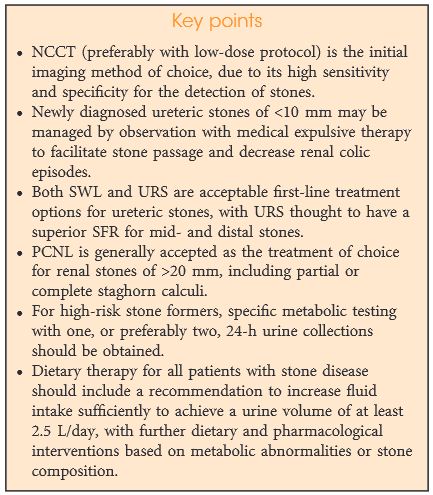Guideline of guidelines: kidney stones
Abstract


Janak Desai and Ronak Solanki
Department of Urology, Samved Hospital, Ahmedabad, India
• To describe our newly developed technique for the removal of renal stones, which we have called ultra-mini percutaneous nephrolithotomy (UMP).
• UMP was performed in 62 patients using a 3.5-F ultra-thin telescope and specially designed inner and outer sheaths. A standard puncture was made and the tract was dilated up to 13 F.
• The outer sheath was introduced into the pelvicalyceal system and the stone was disintegrated with a 365-μ holmium laser fibre, introduced through the inner sheath.
• Stone fragments were evacuated using the specially designed sheath by creating an eddy current of saline; the fragments then came out automatically.
• The mean calculus size was 16.8 mm. Four of the 62 patients were children, three had a solitary kidney and two were obese.
• UMP was feasible in all cases with a mean (sd) 1.4 (1.0) gm/dL haemoglobin decrease and a mean hospital stay of 1.2 (0.8) days. The stone-free rate at 1 month was 86.66%.
• In two patients intraoperative bleeding obscured vision, requiring conversion to mini-percutaneous nephrolithotomy. There was one postoperative complication of hydrothorax, but there were no other postoperative complications and no auxiliary procedures were required.
• UMP is a very safe and effective method of removing renal calculi up to 20 mm. The use of consumables and disposables is minimal and the patient recovery was fast.
• Further clinical studies and direct comparison with other available techniques are required to define the place of UMP in the treatment of low-bulk and medium-bulk renal urolithiasis. It may be particularly useful for lower calyx calculi and paediatric cases.